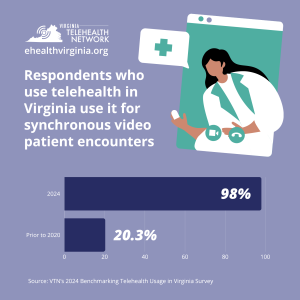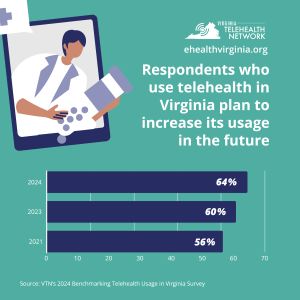As part of ongoing efforts to monitor the impact of telehealth on Virginia’s patients and health care providers, the Virginia Telehealth Network (VTN) conducts a periodic “Benchmarking Telehealth Usage in Virginia” survey of actively practicing licensed health care providers across the Commonwealth. This research effort offers context regarding Virginia’s current and future needs with virtual care.
The third iteration of this benchmarking survey was conducted from February 15 to March 15, 2024, which saw 3,754 health care professionals participate.
A snapshot report of this year’s results can be found here. Below are a few takeaways and anecdotal responses we heard from Virginia’s providers.
Telehealth continues to remove barriers, expand care, and add flexibility
For the third-consecutive year, there was an increase in respondents who noted telehealth’s benefits around scheduling and access to care. Nearly 92% believe telehealth allows them to address patient care barriers (+4.7% from 2023). Most also feel that telehealth offers greater scheduling flexibility (88.2%, +4.2% from 2023) and that it allows them to see more patients (84.1%, +8.1% from 2023).
As noted by several respondents, telehealth specifically has expanded their ability to see patients in underserved areas and/or those with transportation issues that would normally complicate their ability to attend an in-person session.
“Telehealth provides a means of care to populations that would otherwise be limited or without,” noted one respondent. Another specifically addresses remote areas, saying “Telehealth is vital especially to rural areas with fewer providers to offer reasonable access to care.”
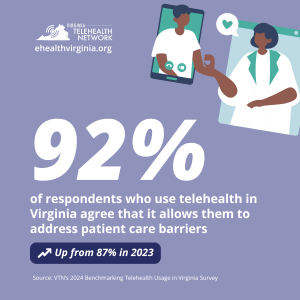
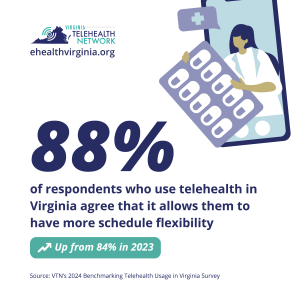
Improvements still exist for both providers and patients
Despite the many benefits telehealth offers providers and patients, there remain several areas that could be improved upon to offer a better experience for both sides of the provider-patient relationship. More than three in four (76.6%) would like fewer regulations around providing care to patients in other states, and two-thirds (66.2%) believe reimbursement for care provided via telehealth could be improved for providers. Interstate licensure is a significant point of concern for providers near neighboring states. “I’m 10 miles from D.C. and Maryland, but I cannot provide patient care because they are not in Virginia,” a respondent shared concerning this point.
For patients, internet connectivity remains the top area for improvement (72.9%), which underscores how many Virginians live in households or communities without adequate, high-speed internet access. One respondent underscored this finding, saying, “Rural areas do not have the reception needed–essentially those with the most need are not able to access telehealth.”
While most respondents noted access to devices (53.3%) and technical assistance (51.4%) as other areas for improvement in the patient experience, both factors saw a slight drop from last year’s survey, -1.8% and -3.6%, respectively.
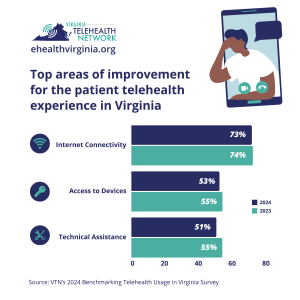
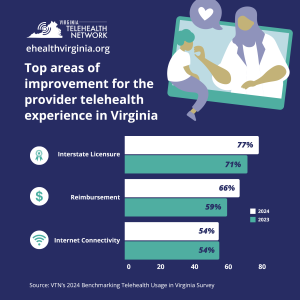
New normal for telehealth usage far exceeds pre-pandemic levels
Telehealth providers report that their total percentage of telehealth versus in-person encounters has declined since the height of the pandemic, but their usage still significantly exceeds pre-pandemic levels. Additionally, more providers said they plan to increase their use of it in the future compared to the past two surveys (64.5%, up from 60.8% in 2023 and 56.6% in 2021).
This survey was made possible thanks to support from the Virginia Department of Health, the Virginia Department of Health Professions, and industry associations. To stay informed about future surveys benchmarking telehealth usage in Virginia, complete the form on this page to sign up for email updates.
